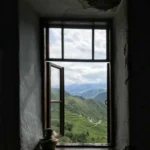As we step into Vilnius Old Town, Lithuania’s heart and soul, we are invited to walk through centuries stitched into every cobblestone and corner. Nestled alongside the banks of the Neris River, this UNESCO World Heritage site offers a spell of history and culture wrapped in winding alleys, baroque spires, and vibrant cafés. For anyone craving to experience medieval architecture, age-old trade routes, folk music traditions, and rich culinary heritage all in one compelling place, Vilnius Old Town speaks volumes. Let us accompany you as we stroll through its lanes, uncovering tales etched in stone and savoring the uniquely Lithuanian atmosphere.
Table of Contents
How To Step Into Vilnius Old Town’s Embrace
Vilnius Old Town is conveniently located at the heart of the city, accessible by various modes of transport. If you arrive by air, Vilnius International Airport lies about 6 kilometers southwest of the city center. From the airport, regular buses and taxis provide quick access to the Old Town. The city’s main railway station is roughly 2 kilometers away, with tram and bus options heading straight to the historic district.
Once in the proximity, keep in mind that the Old Town’s streets are narrow and mostly pedestrian-only zones, perfect for leisurely walking. Bicycles can be rented nearby if you prefer two wheels. Parking is limited within the Old Town, so public transport or walking is often more convenient.
Nearby Accommodation and Culinary Corners
Venture just outside the Old Town’s protective embrace, and you’ll find cozy guesthouses, boutique lodgings, and charming apartments that offer a restful stay while keeping you close to the action. After a day of exploring, drop by local markets like Hales Turgus, where you can sample fresh produce, traditional cheeses, and smoked fish-delicacies that enrich Lithuania’s culinary heritage.
Those who appreciate Vilnius Old Town’s charm may enjoy reading about the wider city’s markets, customs, and hidden corners in the Vilnius Travel Guide.
Cafés and restaurants within the Old Town serve dishes infused with centuries of influences, from hearty cepelinai (potato dumplings) to sweet šakotis cakes. Seek out smaller taverns tucked away in side streets, where you may catch traditional folk songs and enjoy artisan brews.
Stepping Back in Time: Origins and Historical Weight of Vilnius Old Town
The Old Town’s foundation traces back to the 14th century, a time when Vilnius was burgeoning into a central hub within the Grand Duchy of Lithuania, itself a major player in medieval Europe. Walk beneath the soaring towers of the Vilnius Cathedral and imagine the echoes of royal coronations and religious rituals once performed there.
Vilnius Old Town stood at the crossroads of important historic trade routes – pathways over which amber, spices, and textiles journeyed. This vibrant trade fostered economic growth and cultural exchange, visible today in the architectural mix of Gothic, Renaissance, Baroque, and Classicism styles adorning the buildings.
During the Soviet era, preservation efforts slowed, but since Lithuania regained independence, meticulous care has restored the Old Town to its former grandeur. The ongoing conservation work ensures that each restoration respects the original craftsmanship, keeping the architectural heritage alive.
Finding Local Rituals and Folklore in Old Town’s Rhythm
Beyond its buildings, the Old Town’s pulse is felt in its folk music traditions and ritual festivals celebrated by residents. Seasonal fairs and religious processions often fill the squares, reminiscent of centuries-old customs that have survived modern times. In spring and summer, vibrant open-air concerts invite visitors to listen to traditional instruments like the kanklės and birbynė.
Crossing the threshold into the Old Town’s churches and chapels unveils artistry in stained glass and woodcarvings that tell biblical stories alongside Lithuanian legends. These sacred monuments are living museums, offering insight into the spiritual life threading through the city’s history.
Practical Advice for Visiting Vilnius Old Town
- Best Time and Day: To enjoy the Old Town with fewer crowds and pleasant weather, plan your visit in late spring (May to June) or early autumn (September). Weekdays, especially mornings, offer a quieter atmosphere perfect for photography and slow walks.
- Guided Tours and Reservations: While wandering freely is rewarding, consider joining guided walking tours focusing on architectural conservation or culinary heritage for richer context. Advance reservations are recommended during peak tourist seasons.
- What to Bring: Comfortable shoes are essential as streets are cobbled and uneven. A map or offline app is handy since the alleyways can be like a labyrinth.
- Respect Local Customs: When visiting religious monuments, modest clothing is appreciated. During festivals or concerts, be open to participation – locals warmly welcome curious visitors.
Must-See Corners of Vilnius Old Town
Among the countless highlights, a few spots stand out for their resonance and charm:
- Gediminas Tower: The single surviving tower of the Upper Castle, offering panoramic views that stretch over the city’s red rooftops and the winding Neris River.
- Pilies Street: Bustling with market stalls and artisans, this street weaves together craft traditions and street performances.
- St. Anne’s Church: A Gothic jewel with intricate brickwork that reportedly fascinated Napoleon Bonaparte.
- Jewish Quarter: Reflecting the city’s multicultural past, this area bears solemn memorials and vibrant cafés where history intertwines with modern creativity.
More Insight on Vilnius Old Town
For those eager to delve deeper into Vilnius Old Town’s offerings, the official tourism site provides up-to-date information on events, tours, and heritage conservation efforts. Feel free to check its website to plan your itinerary with insider tips.
Walking through Vilnius Old Town is like turning pages of a living book, each step revealing layers of time, tradition, and the resilient spirit of a city that welcomes all who wish to listen to its stories.

Eastern Europe travel specialist uncovering hidden gems from the Baltics to the Balkans.
